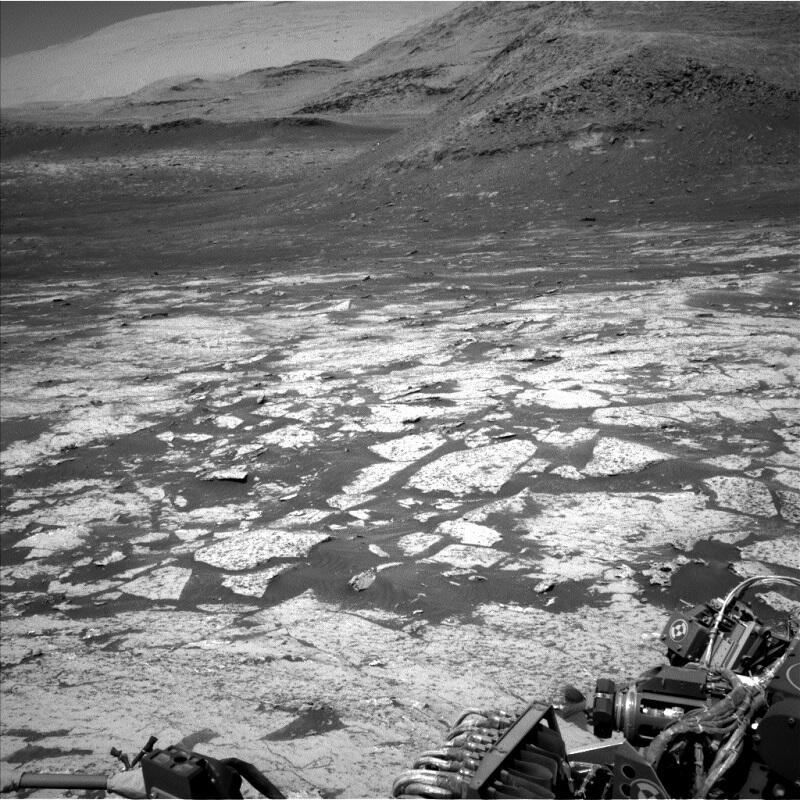Curiosity Blog | Sols 3144-3145: Fifty Meters at a Time
Our 58 meter drive yesterday was successful, putting us in a new location with new targets to analyze! The plan for sols 3144 and 3145 is focused on contact science on two targets, a nodule named “Sarlande” and a patch of bedrock named “Plaisance”.
But before the contact science, we have remote sensing, starting with a couple of Navcam dust devil movies and a Mastcam tau observation to measure dust in the atmosphere. That is followed by two ChemCam “passive” observations of the targets “Fonladier” and “Jaure” with accompanying Mastcam stereo. In the afternoon of Sol 3144, Mastcam has two mosaics: one of a group of parallel veins off to the side of the rover, and the other of Plaisance and surroundings in the workspace. MAHLI then will take a look at the REMS UV sensor, and then Plaisance and Sarlande. After MAHLI, APXS will do a quick measurement of the composition of Sarlande and an overnight measurement of Plaisance.
On Sol 3145, we will start off with another Navcam dust devil movie and an observation of the crater rim to measure dust in the atmosphere. ChemCam will then zap the target Sarlande and collect passive spectra of the target Plaisance. We’ll follow this up with a Mastcam documentation image of Sarlande, a multispectral observation of Plaisance, and a stereo mosaic of some interesting stratigraphy. We’ll wrap up Sol 3145 with another ~50 meter drive and our standard post-drive imaging.
by Ryan Anderson
Get Our News
These items are in the RSS feed format (Really Simple Syndication) based on categories such as topics, locations, and more. You can install and RSS reader browser extension, software, or use a third-party service to receive immediate news updates depending on the feed that you have added. If you click the feed links below, they may look strange because they are simply XML code. An RSS reader can easily read this code and push out a notification to you when something new is posted to our site.


